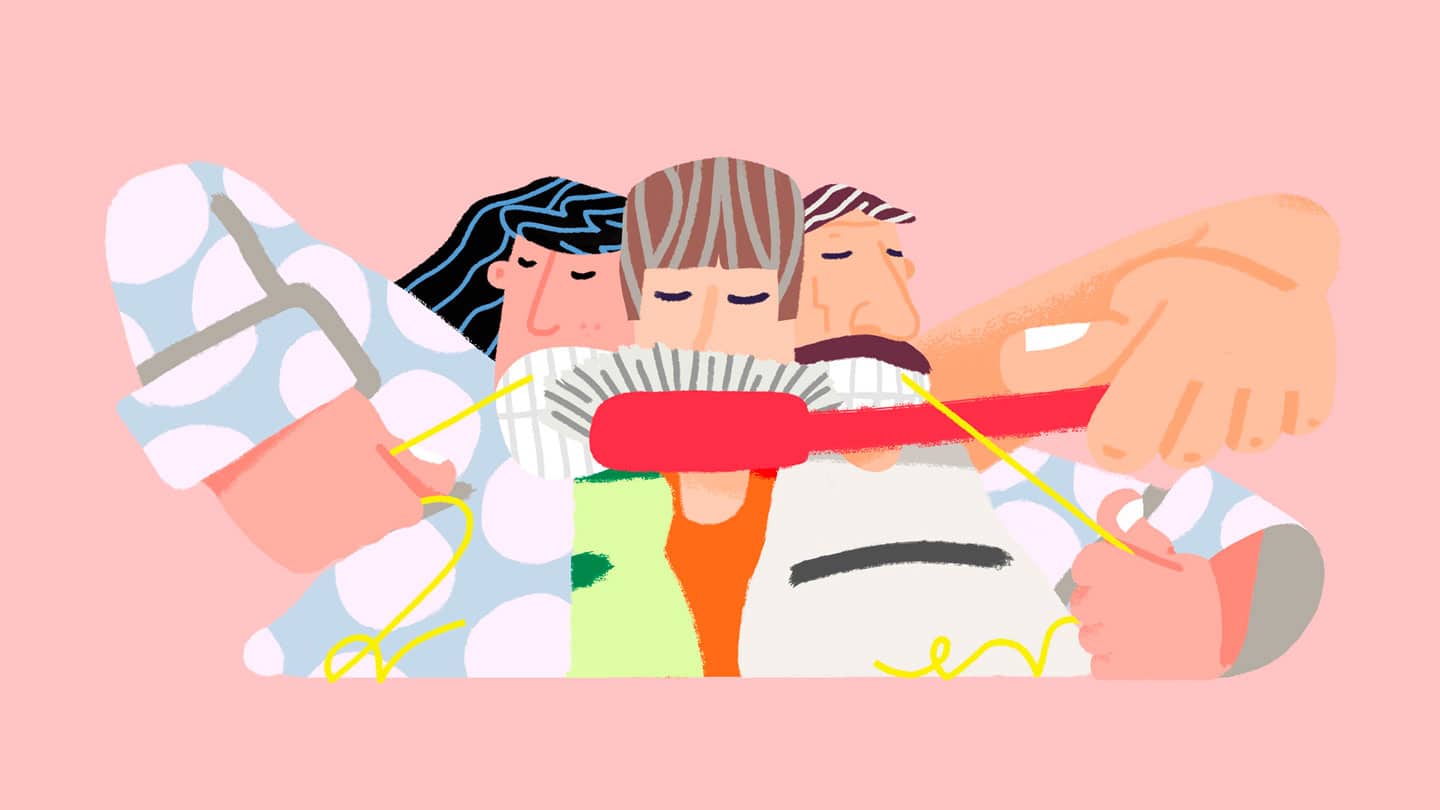We all know that brushing our teeth every day is the key to a healthy mouth, but at CHD we get a lot of questions about flossing. Do you really need to floss? Why floss? Does it actually work? How often should you floss? Explore our comprehensive guide to flossing for a healthy mouth.
The inside skinny on flossing – and we don’t mean the dance.
- With dental floss, you can clean the spaces between your teeth that are too narrow for your toothbrush.
- You can hold the floss right in your hand or use a dental floss holder.
- We recommend flossing daily, after you brush your teeth in the evening.
- Dental floss and interdental brushes work best together.
What’s dental floss for?
Since most people’s teeth touch, there’s no way a manual or electric toothbrush can clean the entire surface of your teeth. In fact, even the best brushing will only clean 70% of their total surface!
The missing 30% is made up of the surfaces where your teeth touch. Studies have shown that those are exactly the areas at the highest risk of developing cavities.
That’s why flossing is key to remove buildup and bacteria and keep problems like cavities from developing.
Flossing can also clean along the edges of and under your gums. That helps prevent the most common type of gum inflammation, gingivitis.
What’s the best flossing technique?
- Remember to wash your hands before flossing, you’ll be touching your mouth.
- Then cut off about a 30 cm piece of floss.
- Roll one end of the floss on to one middle finger, leave a 5 cm space for your front teeth or a 10 cm space for your back teeth, and then roll the rest of the floss onto your other middle finger.
- Use your index fingers and thumbs to guide the floss, keeping one hand in your mouth and the other outside it.
- Slide the floss carefully between your teeth, moving it gently from side to side. Never push it straight up or down – that could damage your gums. Once the floss has moved past the contact point, stop applying pressure. Just move the floss gently along the gum line on each tooth. Don’t forget to floss the back, too! Make sure you go all the way to floss just under your gums.
- Repeat on both sides of your teeth. And remember to pull very gently as you pass the contact point to avoid damaging your gums.
Is floss right for everyone?
Manual flossing techniques can be tricky. If you struggle to master them, accessories like floss holders are a great option even though they aren’t quite as precise.
You should floss as often as you can! That said, flossing 3 times a day isn’t a realistic recommendation, and for many people it wouldn’t even be helpful.
- Many of our patients need other interdental accessories that are a better fit for their needs. Factors that can make other options more appropriate than floss include gum or bone loss, certain medical conditions, loss of dexterity, overlapping or widely spaced teeth, and more. Your hygienist will discuss those issues during your check-up.
At Clinique Hygiène Dentaire, our patients get personalized recommendations on at-home care during each visit with a hygienist, so they can develop a consistent strategy with realistic goals. We treat every patient as an individual, so your care plan will be tailored to your budget, your habits, and even your levels of motivation and patience.
FAQ
How often do you need to floss?
You should floss as often as possible, but we know flossing 3 times a day isn’t a realistic goal.
That’s why we recommend flossing daily, after you brush your teeth in the evening.
Are floss holders a good solution?
Floss holders and traditional dental floss do the same job. You may find that a floss holder is easier for you to use, or that you like the vibrating version so you can massage your gums as you floss.
How much does dental floss cost?
You can buy dental floss in pharmacies, drugstores, and supermarkets. Prices range from 2.- to 4.- (€2 to €3).
Should I use dental floss or interdental brushes?
Dental floss and interdental brushes work best together. While you can clean the spaces between your teeth more effectively with an interdental brush, there are places that only floss can reach.
[widget id=”custom_html-19″]



